Exploring London's Somerset House: A Hidden Gem
Introduction to London's Somerset House
Tucked away in the bustling cityscape, London’s Somerset House stands as a testament to the city’s rich historical tapestry. Once a grand Tudor palace, this iconic structure has undergone a remarkable transformation over the centuries, evolving from a royal residence into a dynamic cultural hub. This metamorphosis reflects not only architectural innovation but also the enduring significance of heritage sites.
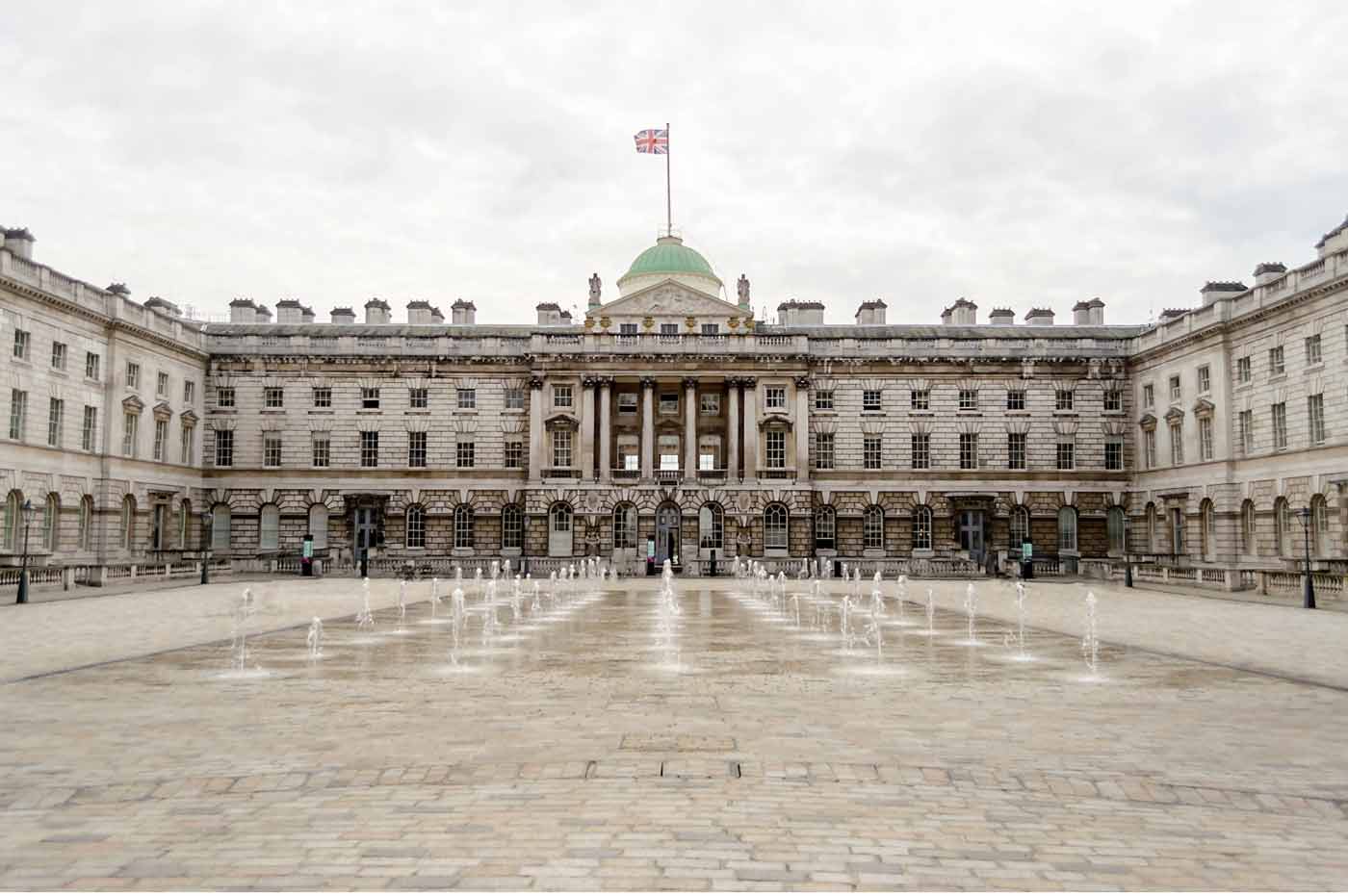
Exploring such historical landmarks offers more than just a glimpse into the past—it provides insights into how these spaces have shaped and been shaped by the course of history. Engaging with these stories allows both locals and tourists to appreciate the intricate layers of culture and history embedded within London.
In this article, you will delve into:
- The fascinating historical background of Somerset House.
- Its architectural significance and evolution.
- Notable historical events that have unfolded within its walls.
- The contemporary role it plays as a vibrant center for art and culture.
- Practical information for those planning to visit this hidden gem in London.
Join us on this journey as we uncover why exploring London’s Somerset House is an experience not to be missed.
Historical Background of Somerset House
The story of Somerset House begins in 1547 when it originated as a Tudor palace, built for Edward Seymour, the Duke of Somerset. This historical figure was not just any nobleman; he held the influential position of Lord Protector during the reign of his nephew, King Edward VI. The construction of this grand building on the north bank of the River Thames marked an era where power and architectural ambition went hand in hand.
From Royal Residence to Political Hub
Edward Seymour’s influence extended beyond architecture. His royal associations positioned Somerset House at the center of England’s political landscape. As time passed, this palatial residence became a symbol of regal opulence and strategic importance. Its halls and chambers witnessed numerous royal gatherings and events that resonated throughout British history.
A Shift in Purpose
Despite its origins as a royal residence, Somerset House underwent significant transformations. By the late 17th century, its role shifted from that of a majestic home to more utilitarian purposes. It transitioned into government offices, reflecting broader changes in the use of urban spaces in London. This shift saw Somerset House becoming an integral part of Britain’s bureaucratic system, housing various offices such as the Navy Board and later the Inland Revenue.
Architectural Adaptability and Urban Development
The transition from a Tudor palace to government offices illustrates not only architectural adaptability but also the dynamic nature of London’s urban development. Somerset House’s historical significance is deeply rooted in these transformations, showcasing a journey from noble beginnings to essential government functions.
This rich history sets the stage for understanding how Somerset House evolved over centuries, eventually becoming a vital part of London’s cultural and administrative landscape.
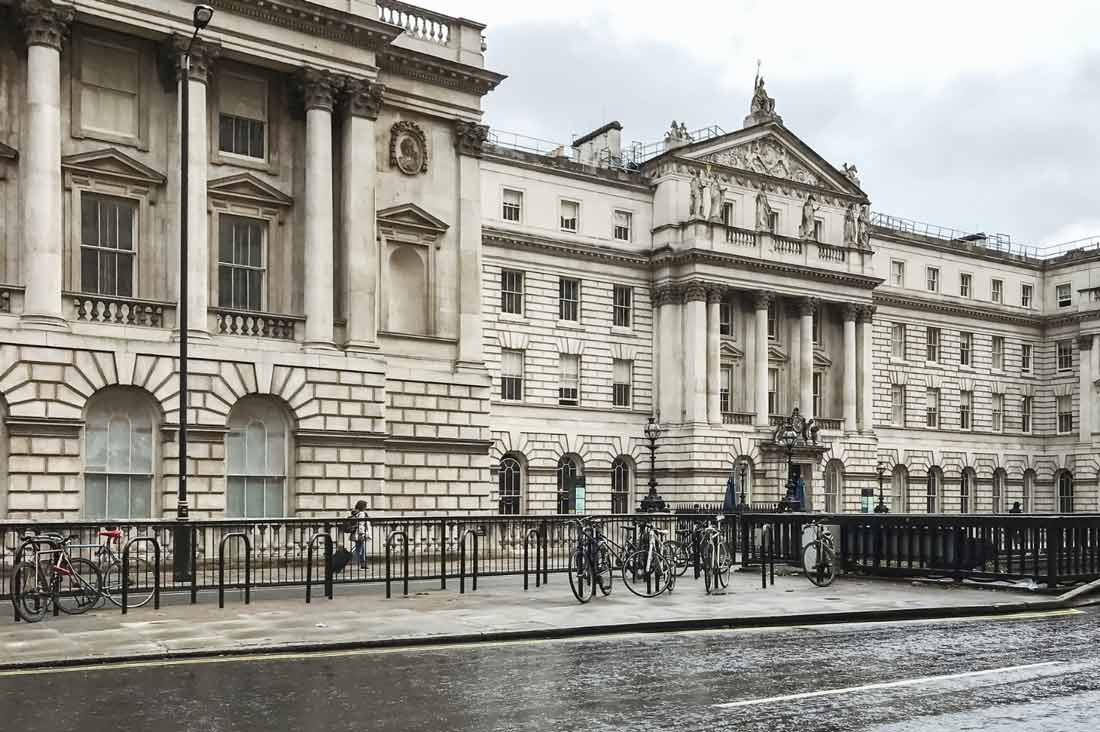
The Evolution of Somerset House
Somerset House, as we know it today, underwent a significant transformation primarily due to the efforts of Sir William Chambers, a renowned architect. His vision and expertise were instrumental in reconstructing the building between 1776 and 1801.
Chambers was commissioned by the government for this project, which aimed to reshape London’s architectural landscape by incorporating elements from both Palladian and Renaissance styles.
Original Construction by Sir William Chambers (1776-1801)
During this period, under Chambers’ careful guidance, Somerset House was rebuilt with the intention of meeting the administrative requirements of various government offices. This marked a departure from its previous association with royalty, as the focus shifted towards creating a structure that exuded grandeur and orderliness befitting its new purpose.
The construction undertaken during this time is noteworthy for its meticulous attention to classical details and proportions.
Chambers’ architectural philosophy drew heavily from the Palladian tradition—a style characterized by its emphasis on symmetry, perspective, and principles derived from ancient Roman architecture. This influence is prominently displayed in Somerset House’s majestic facades and well-organized layouts. Additionally, elements of Renaissance design further enriched the overall aesthetic, seamlessly blending elegance with functional spaces tailored for governmental use.
Architectural Style and Influences: Palladian and Renaissance Elements
The east wing of Somerset House serves as a clear representation of Palladian influence, showcasing precise geometric forms that evoke a sense of harmony. Here, large columns and expansive windows create an imposing yet inviting entryway—a testament to Chambers’ mastery over classical architectural techniques.
Simultaneously, decorative details such as intricate stone carvings and ornamental motifs found throughout various sections of the building reveal the presence of Renaissance influences. These embellishments add an extra layer of sophistication to the overall design while paying homage to artistic traditions that preceded them.
By skillfully combining these two styles—Palladianism’s grandeur with Renaissance elegance—Chambers was able to craft an environment that struck a balance between visual appeal and practicality. His design not only showcased his command over classical elements but also demonstrated his ability to adapt these principles according to contemporary needs.
Changes in Structure Through the Years
As time went on, Somerset House underwent several modifications in order to accommodate changing functions and demands placed upon it.
One significant alteration involved completing what is known as “the quadrangle”—a central courtyard encircled by interconnected buildings—which became one of Chamber’s defining features within his original blueprint. This space served as both an epicenter for administrative activities as well as hosting public events.
Furthermore, additional outer wings were constructed which expanded Somerset House’s capacity while still preserving its architectural integrity. Careful consideration was given during this process so that these extensions seamlessly integrated into existing designs while maintaining continuity with Chamber’s original vision but allowing greater flexibility when it came usage purposes.
The timeline surrounding these renovations reveals how adaptive reuse has played an integral role in ensuring Somerset House remains relevant even today. While historical authenticity has been preserved through various modifications made over time—ensuring it stays true its past significance—it has also become an essential part London’s civic infrastructure moving forward.
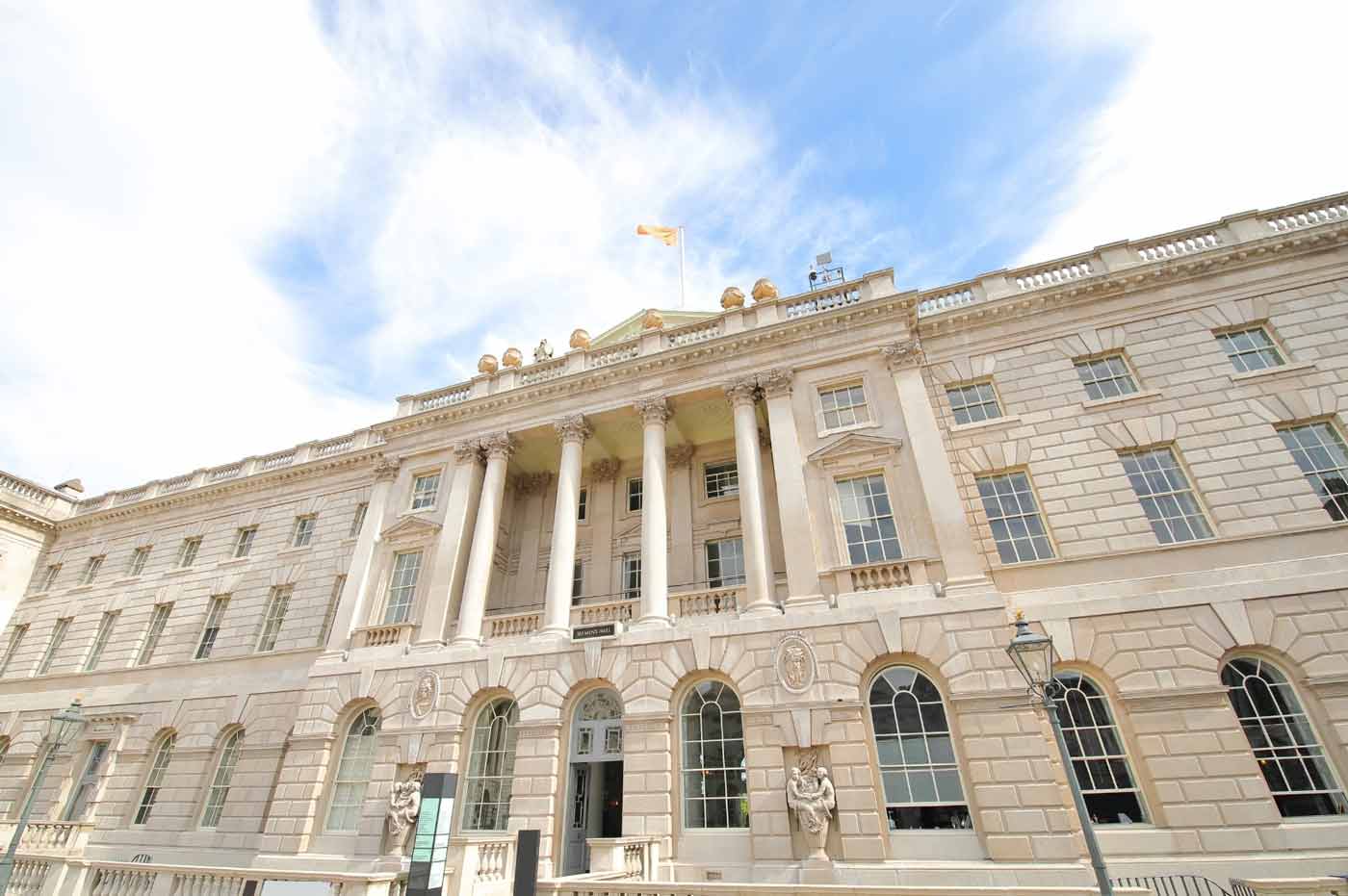
Architectural Significance of Somerset House
Somerset House is a Grade I listed building, a testament to its architectural design and historical importance. The architectural features of the building are an exquisite blend of Palladian and Renaissance styles, a reflection of Sir William Chambers‘ vision. The grand façade, characterized by its classical symmetry and ornate detailing, gives it a distinguished presence along the River Thames.
Key architectural elements include:
- The Grand Courtyard: Dominated by a central fountain, this expansive space serves as a focal point for visitors and events.
- The Neoclassical Facade: Featuring columns and pilasters that emphasize verticality and grandeur.
- River Terrace: Offers sweeping views of the River Thames, allowing visitors to appreciate London’s skyline.
The Grade I listing underscores the significance of Somerset House in preservation efforts. Buildings with this status are recognized for their exceptional interest, warranting every effort to preserve them. This ensures that Somerset House remains an enduring part of London’s urban fabric.
Positioned strategically between the Strand and Victoria Embankment, Somerset House enjoys a unique relationship with its surrounding landscape. The Strand, historically a key route through London, provides easy access from the bustling heart of the city. Meanwhile, Victoria Embankment offers picturesque views across the Thames, connecting Somerset House visually to both historic and modern landmarks.
This juxtaposition enhances its status as an emblematic structure within the cityscape—bridging past and present through its architecture and location. Visitors can witness not just a building but an embodiment of London’s evolving history, set against the backdrop of one of the world’s most iconic rivers.
The architectural significance of Somerset House isn’t limited to its aesthetic appeal; it’s about preserving a piece of history that continues to influence contemporary culture and public engagement.
Notable Historical Events Associated with Somerset House
Somerset House has been at the center of many important moments in British history.
During the English Civil War, it served as an army headquarters, providing a strategic base that played into the broader conflict between Royalists and Parliamentarians. This period marked a dramatic shift in the use of the building, from royal residence to military hub, reflecting its adaptability and significance.

The house has also been home to notable figures such as Charles I and his queen, Henrietta Maria of France. Their residency is a testament to the building’s status as a royal seat. Henrietta Maria’s presence brought with it a flourish of cultural activities; her patronage was instrumental in introducing French theatrical productions and masques to London, thereby enriching its cultural tapestry.
Cultural Events
Throughout history, Somerset House has hosted significant cultural events. The site has seen grand banquets, balls, and performances that have drawn luminaries from across Europe. It was particularly renowned for its spectacular masques during the Stuart period, which were elaborate courtly entertainments combining poetry, music, dance, and elaborate set designs.
These events not only highlight the historical significance of Somerset House but also underscore its role as a dynamic center for cultural exchange. Its walls have echoed with the sounds of both political maneuvering and artistic celebration, making it not just a building of bricks and mortar but a living chronicle of English history.
Contemporary Role of Somerset House as a Cultural Hub
London’s Somerset House is a shining example of the city’s lively cultural scene. This iconic building has undergone a remarkable transformation, embracing its current role as a hub for contemporary art and culture. A journey through its corridors reveals how this historic site has been revitalized to foster creativity and community engagement.
Transformation into a Center for Contemporary Art and Culture
Somerset House is not just a relic of the past; it thrives as a dynamic venue for modern artistic expression. The transition from a historic government office complex to a bustling cultural hub was marked by the establishment of several arts organizations within its walls. This transformation has positioned Somerset House at the forefront of London’s cultural landscape, making it an essential destination for art enthusiasts.
Overview of Arts Organizations Based at Somerset House
Several prestigious arts organizations call Somerset House home, each contributing to its reputation as a center for creativity:
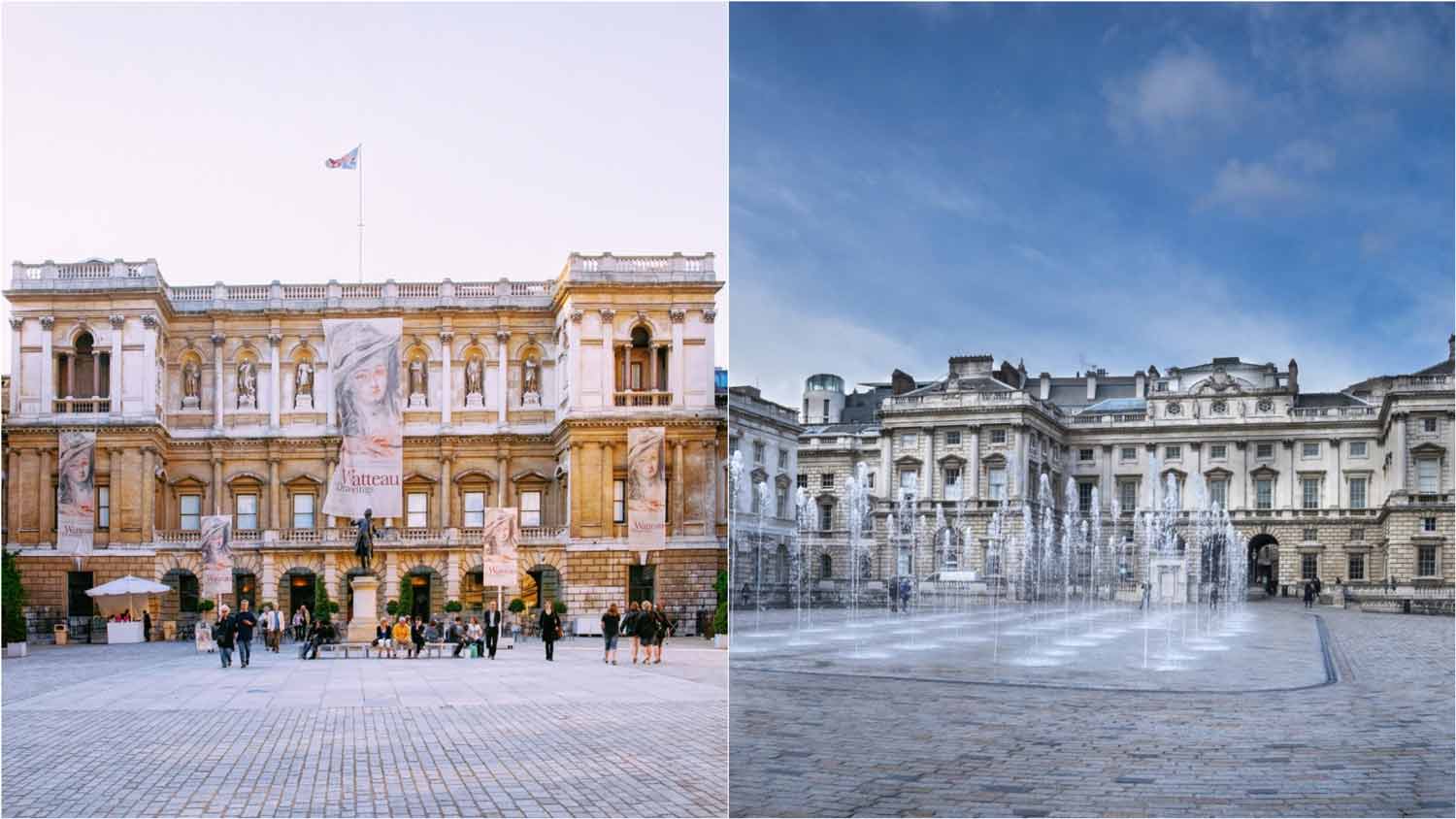
- Royal Academy: Known for its dedication to promoting contemporary art, it plays an instrumental role in curating exhibitions that challenge and inspire.
- Courtauld Institute of Art: Renowned globally for its cutting-edge research and academic programs in art history.
- London Fashion Week: Regularly hosted here, showcasing innovative designs from top fashion designers.
These institutions ensure that Somerset House remains an influential player in both the local and international art scenes.
Details on Seasonal Activities and Exhibitions
Somerset House is synonymous with exciting seasonal activities and exhibitions. Whether it’s summer or winter, visitors can expect a variety of engaging events designed to captivate diverse audiences:
- Summer Series: Outdoor concerts featuring international music acts set against the picturesque backdrop of the courtyard.
- Skate at Somerset House: A wintertime favorite where the courtyard transforms into a magical ice rink adorned with festive lights.
Featured Exhibitions and Events at Somerset House
The exhibitions hosted at Somerset House are noteworthy not only for their artistic value but also for their thought-provoking themes:
- “Utopia”: An exploration of idealistic visions through installations, performances, and talks that engage visitors in discussions about society’s future.
- “Mushrooms”: A fascinating exhibition that delves into the ecological significance and cultural impact of fungi.
These exhibitions highlight Somerset House’s commitment to presenting innovative works that resonate with contemporary issues.
Information on Annual Events such as Festivals and Art Installations
Annual events like festivals further cement Somerset House’s reputation as a lively cultural venue:

- Film4 Summer Screen: An outdoor cinema experience featuring classic films under the stars.
- Photo London: A prestigious photography fair attracting international collectors and artists.
These recurring events draw crowds from all over the world, adding vibrancy to London’s cultural calendar.
Role in Community Engagement Through Educational Programs
Somerset House extends beyond being just an exhibition space; it plays an active role in community engagement through educational initiatives:
- Workshops tailored for schools encourage young minds to explore creativity.
- Public lectures provide insights into various aspects of art history and contemporary practices.
- Collaborative projects with local communities aim to make art accessible to everyone.
By fostering educational opportunities, Somerset House strengthens its connection with the community while inspiring future generations of artists.
Visiting Information for Somerset House
Public Transit Access
Getting to Somerset House is straightforward, thanks to its central location in London. Several public transport options are available:
- Tube: The closest stations are Temple (Circle and District lines), Covent Garden (Piccadilly line), and Charing Cross (Bakerloo and Northern lines).
- Bus: Numerous bus routes stop near Somerset House, including routes 1, 4, 6, 9, 11, 13, 15, 23, 26, and 76.
- Train: Charing Cross station is a short walk away for those traveling by overground train.
Visitor Amenities
Somerset House offers a range of amenities to enhance your visit:
- Guided Tours: Explore the rich history and stunning architecture with expert-led tours. These tours provide insights into the building’s storied past and its current role as a cultural hub.
- Cafés and Restaurants: Enjoy a selection of dining options that cater to various tastes. Whether you’re after a quick coffee or a leisurely meal with views of the River Thames, you’ll find something to suit your palate.
Tips for Planning a Visit
To make the most of your visit to Somerset House:
- Best Times to Go: Weekdays tend to be less crowded than weekends. If possible, plan your visit during off-peak hours to enjoy a more relaxed experience.
- Visiting Hours: Typically open daily from morning until early evening. It’s advisable to check their official website for any changes in opening times or special event closures.
- Ticket Information: While general entry is often free, certain exhibitions may require tickets. Booking in advance is recommended for popular events.
Whether you’re drawn by its architectural beauty or its contemporary cultural offerings, Somerset House promises an enriching experience steeped in history and modern creativity.
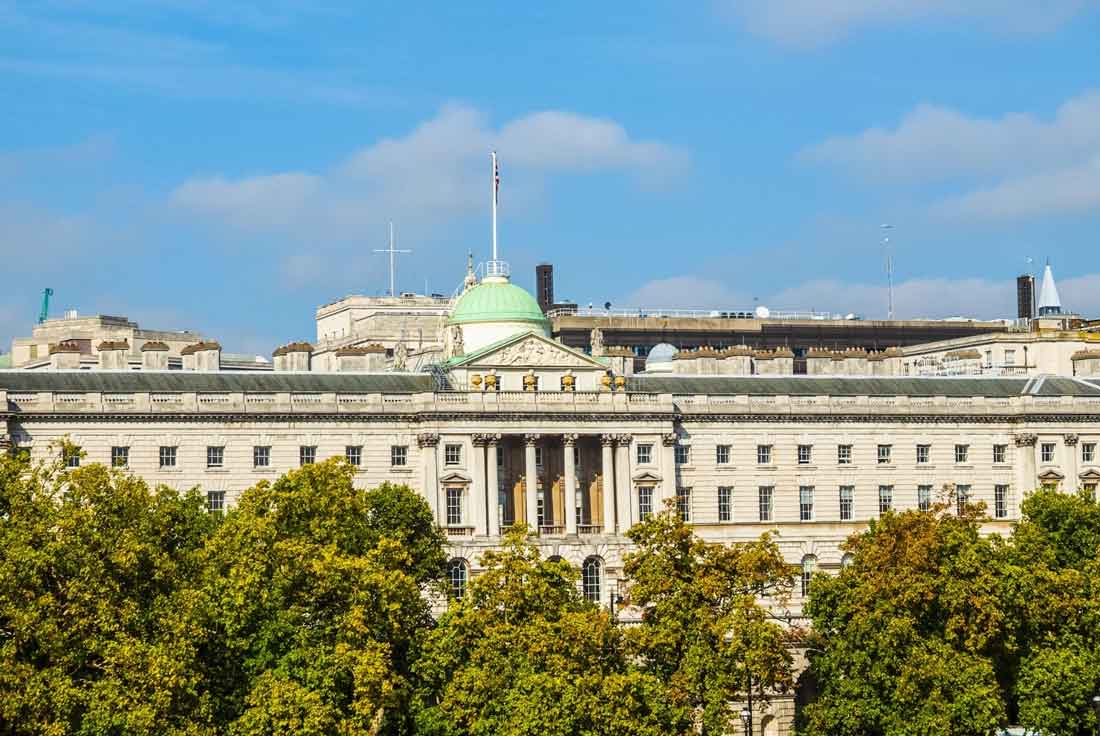
Conclusion: Exploring the Cultural Landscape of London Through Somerset House
London’s Somerset House is a shining example of the city’s rich cultural scene. It has a deep history and also serves as a lively center for art and creativity today. Whether you’re a local or a visitor, this stunning building gives you a chance to explore London’s past while also experiencing its present.
1. Cultural Significance
Somerset House has seen many important moments in history. It started as a royal home and later became an office for the government. Every part of this building has a story to tell, making it more than just a beautiful piece of architecture.
2. Modern Attractions
Somerset House has adapted to modern times by welcoming various arts organizations and exhibitions. Visitors can immerse themselves in contemporary art through innovative installations like “Utopia” and “Mushrooms.”
3. Community Engagement
Discovering this hidden gem offers valuable insight into how historical places shape London’s identity. Whether you’re passionate about history or art, Somerset House guarantees an enriching experience filled with exploration and motivation.
Frequently Asked Questions (FAQ)
Somerset House originated as a Tudor palace in 1547, linked to Edward Seymour, the Duke of Somerset. It transitioned from a royal residence to government offices, reflecting its historical importance and royal associations over the centuries.
The original construction of Somerset House was designed by Sir William Chambers between 1776 and 1801. The architectural style incorporates Palladian and Renaissance elements, showcasing significant changes in structure, particularly in the quadrangle and outer wings.
Somerset House has been associated with several notable historical events, including its use as an army headquarters during the English Civil War. It has also hosted prominent figures like Charles I and Henrietta Maria of France and significant cultural events throughout history.
Today, Somerset House serves as a vibrant cultural hub, hosting contemporary art exhibitions such as ‘Utopia’ and fashion shows. It is home to various arts organizations, including the Royal Academy, and engages the community through seasonal activities and educational programs.
Visitors can access Somerset House via public transport with various options available. It offers amenities such as guided tours and cafes. To make the most of your visit, consider planning around seasonal exhibitions and events while aiming for less crowded times.
Somerset House is regarded as a hidden gem due to its rich history, stunning architecture, and dynamic role in London’s cultural landscape. It encourages exploration from both locals and tourists, offering insights into London’s heritage alongside contemporary artistic expressions.
